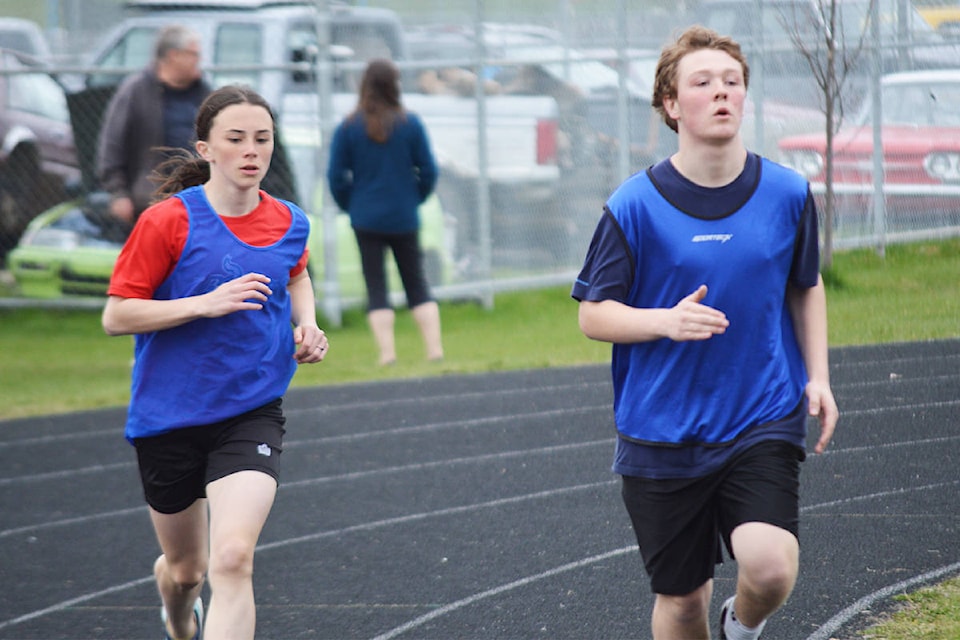Correlieu Secondary School’s back field was filled with track and field athletes excited to run, jump and throw in the second annual Ice Breaker Track Meet last week (May 2-3).
Approximately 30 kids from Quesnel Junior School and CSS joined 22 local Special Olympics athletes in shaking off the rust from a long winter.
The competitors were split up into four evenly-matched teams with both generic and Special Olympics athletes. All of the athletes competed in every event other than the 1500m run, which was optional.
Conditions were a lot better than the soggy ones the athletes endured last year, so everyone was putting forth their very best effort.
Janet Barker, who coaches the CSS track team, says the meet is quite unique.
“I think it’s one of the rare events [of its kind],” she says.
“Quite often, they’re including Special Olympics athletes at our zones and provincial meets, but they are included in their own category, so there will be a race just for [them].
“The difference at this meet is that they compete in teams and the teams are mixed, so there are generic athletes and Special Olympics athletes on the same team and sometimes in the same race.
“It’s not like the Special Olympics athletes do their own thing while we’re doing ours or vice-versa; we all do it together, and everyone cheers everyone else on.
“It’s true inclusion, rather than a separate event for Special Olympics.”
Track events included the 100m, 200m, 400m and 1500m runs, as well as a 4x100m relay race. For the field portion, everyone competed in javelin, long jump (or standing long jump), shot put and hammer throw.
As it was the first year for hammer throw, some athletes used a soccer sock with a softball instead of the standard hammer throw apparatus.
Quesnel Special Olympics program director Rick Prosk says he was excited to field their largest track team ever.
“I’d say that there’s a pretty high level of enthusiasm for this event,” he says. “Most of them had done it last year, so they have an idea of what it’s all about, so it’s nice because they actually get a chance to compete.”
He points to two Special Olympics athletes who performed excellently.
“Matt Hender and Jessica Colpitts beat their personal bests in all six events,” he says.
For the generic athletes, it was a good chance to try out the Special Olympics model of competing in as many events as possible.
“They might do the 100m and 200m, but they’ll also do long jump and shot put,” says Prosk, “so it kind of fits with that idea that athletes can train and compete in different events and not just specialize in one or two.
“That’s one of the things that I like about this is that everybody is expected to participate to the best of their ability.”
At the end of the meet, the results were close, with the Green Team winning with 381 points, Yellow following with 352, and Blue and Pink close behind with 349 and 347, respectively.
